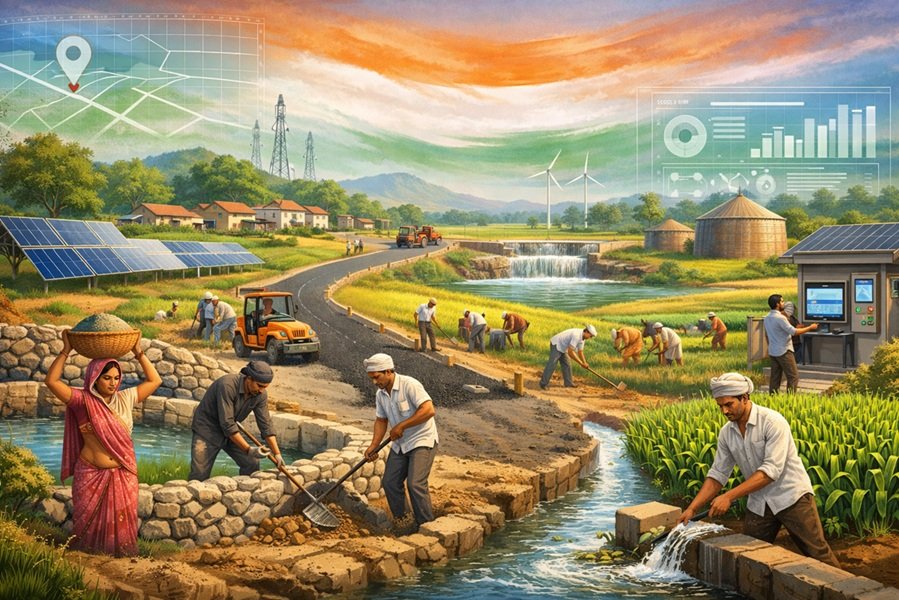
Introduction
Research and Development (R&D) is the driving force behind economic growth, technological progress, and national security. Countries that invest heavily in R&D lead in innovation, industrial growth, and scientific breakthroughs. However, India’s R&D spending remains disproportionately low compared to global leaders like China, the United States, and European nations.
The Stark Contrast: India vs. China
- China’s R&D Budget (2023): $496.32 billion (approx. 2.55% of GDP)
- India’s R&D Budget (2025): $17.2 billion (approx. 0.64% of GDP)
China spends nearly 29 times more on R&D than India, which reflects its commitment to technological dominance, innovation, and global economic leadership. If India wants to remain competitive, bridge the innovation gap, and emerge as a technological powerhouse, it must substantially increase its R&D budget.
Recommended: Why India Needs a $100 Billion Defense Budget
Why India Needs to Increase Its R&D Budget
1. Economic Growth and Industrial Development
R&D investment directly fuels economic growth by promoting industrial innovation and job creation. Countries with high R&D spending experience higher GDP growth rates, increased productivity, and a strong industrial base.
- China’s Economic Boom: China’s rise as a global manufacturing and technological giant is directly linked to its massive R&D investments in sectors like electronics, pharmaceuticals, artificial intelligence, and space technology.
- India’s Potential: A higher R&D budget would boost India’s industries, enhance global competitiveness, and create millions of high-skilled jobs.
2. Technological Advancement and Global Competitiveness
The world is shifting towards an innovation-driven economy, where technological superiority determines a nation’s global standing. India lags in critical sectors such as semiconductors, robotics, quantum computing, and biotechnology.
- China’s Edge: China is investing billions in cutting-edge research in areas like 5G, AI, space exploration, and quantum computing, while India struggles to keep pace.
- India’s Need for Investment: A higher R&D budget would accelerate India’s technological progress and reduce dependence on foreign technologies.
3. National Security and Defense Modernization
A strong R&D sector is essential for defense and national security. India faces constant security challenges from China and Pakistan, making indigenous defense technology development a top priority.
- China’s Military R&D: China is developing hypersonic weapons, cyber warfare capabilities, and AI-driven military technologies, backed by extensive R&D funding.
- India’s Defense R&D Challenges: India still relies on foreign defense imports for advanced weaponry, making it vulnerable in times of geopolitical tensions.
- Why More Investment is Needed: Increasing R&D funding for DRDO (Defense Research and Development Organization) and private defense firms would strengthen India’s military self-reliance and security.
4. Space Exploration and Scientific Innovation
India has achieved remarkable success in space exploration, but its low R&D budget limits further advancements.
- China’s Space Investments: China has a dedicated $12 billion+ budget for space R&D, supporting moon missions, space stations, and deep-space exploration.
- India’s ISRO Funding: ISRO operates with a fraction of that budget, yet it has achieved great milestones like Chandrayaan, Mangalyaan, and Gaganyaan. However, to compete globally, India must invest more in space research.
5. Healthcare, Pharmaceuticals, and Biotechnology
The COVID-19 pandemic highlighted the importance of medical research and biotechnology. While India is a global pharmaceutical hub, its R&D investments in healthcare are minimal compared to China and the U.S.
- China’s Biomedical R&D: China heavily invests in gene editing, vaccine research, AI-driven diagnostics, and biopharmaceuticals.
- India’s Underfunded Healthcare R&D: India’s investment in biotech, genetic research, and vaccine development is significantly lower, limiting its ability to lead in global healthcare innovations.
A larger R&D budget would boost medical research, making India self-sufficient in critical drugs, vaccines, and advanced medical technology.
6. Artificial Intelligence, Robotics, and Semiconductor Industry
The world is moving towards an AI-driven future, and nations with strong AI research will dominate the next industrial revolution.
- China’s AI Dominance: China has invested over $150 billion in AI research, with companies like Alibaba, Tencent, and Baidu leading global AI innovation.
- India’s AI R&D Lag: While India has top AI talent, a lack of investment in AI research and semiconductor manufacturing forces Indian companies to rely on imported chips and technology.
- Why India Must Act Now: Increasing R&D funding in AI, robotics, and semiconductor manufacturing would reduce dependence on China and the U.S. and make India a global AI hub.
7. Climate Change, Renewable Energy, and Sustainable Technologies
As a rapidly developing economy, India must lead in green technology, renewable energy, and climate-friendly innovations.
- China’s Green Investments: China has invested over $90 billion in renewable energy R&D, leading in solar, wind, and electric vehicle technologies.
- India’s Need for Higher R&D: India must invest more in clean energy, hydrogen fuel cells, battery technology, and sustainable agriculture to achieve energy independence and combat climate change.
8. Education, Research Institutions, and Talent Development
A strong R&D ecosystem requires world-class universities, research centers, and funding for scientists.
- China’s Academic Investments: China has dedicated $50+ billion to university-led research, leading to breakthroughs in physics, chemistry, and engineering.
- India’s R&D in Education: India’s top universities struggle with funding shortages, outdated research facilities, and brain drain.
- Why More Investment is Needed: Increasing the R&D budget would help retain Indian scientists, attract global researchers, and turn India into a knowledge superpower.
What India Should Do to Increase R&D Investment
- Raise R&D Spending to At Least 1.5 to 2% of GDP
- India should aim for $60-100 billion in annual R&D spending to compete with China and the U.S.
- Government and private sector collaboration is essential to achieve this target.
- Encourage Private Sector R&D
- Major companies like TCS, Infosys, Reliance, and Tata must be incentivized to invest more in AI, robotics, and clean energy research.
- Increase Funding for Universities and Research Institutes
- Boost funding for IITs, IISc, ISRO, and DRDO to enhance research output.
- Create a National Innovation Fund
- A dedicated innovation fund would support startups, researchers, and technology-driven industries.
- Focus on Defense, Space, and AI Research
- Strengthening research in hypersonic weapons, space exploration, and AI-driven security systems is crucial for national security.
- Develop a Strong Semiconductor and Electronics Ecosystem
- India must reduce dependence on China by setting up semiconductor fabrication plants and electronics R&D centers.
Conclusion: The Time to Act is Now
India cannot afford to lag behind in the global race for technological supremacy and economic growth. While India has immense talent and potential, its low R&D spending is holding it back from becoming a true global leader.
A higher R&D budget will:
✅ Boost economic growth and industrial development.
✅ Strengthen India’s defense and security capabilities.
✅ Enhance scientific innovation and global competitiveness.
✅ Reduce dependence on foreign technology.
✅ Create millions of high-skilled jobs.
✅ Position India as a leader in AI, space, and green energy.
The time to increase India’s R&D budget is NOW. Investing in research today will define India’s future as a superpower. 🚀





